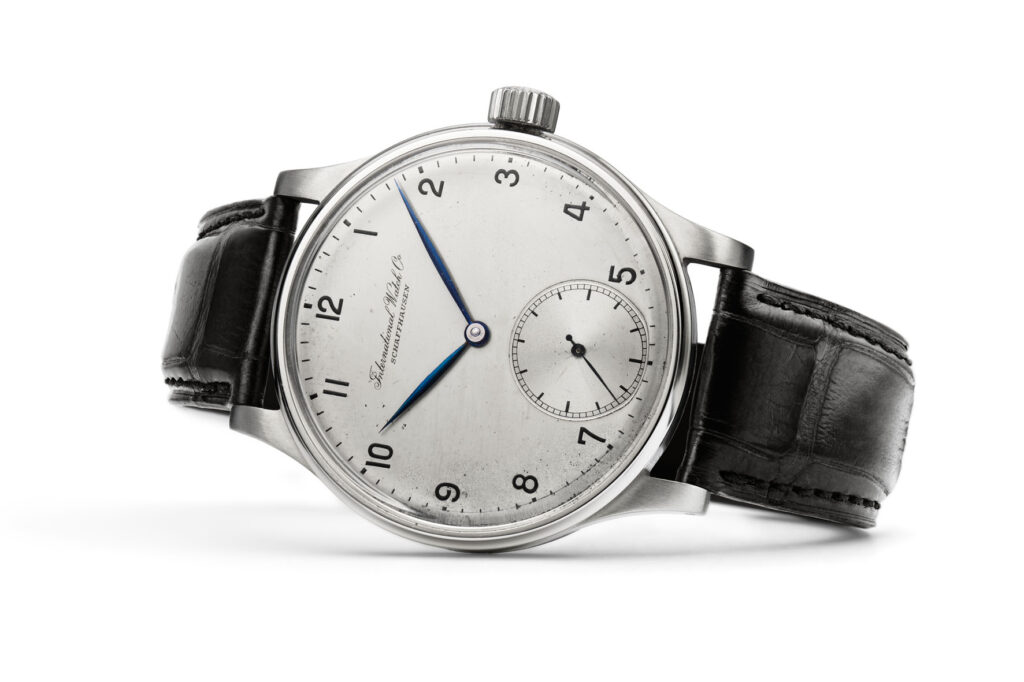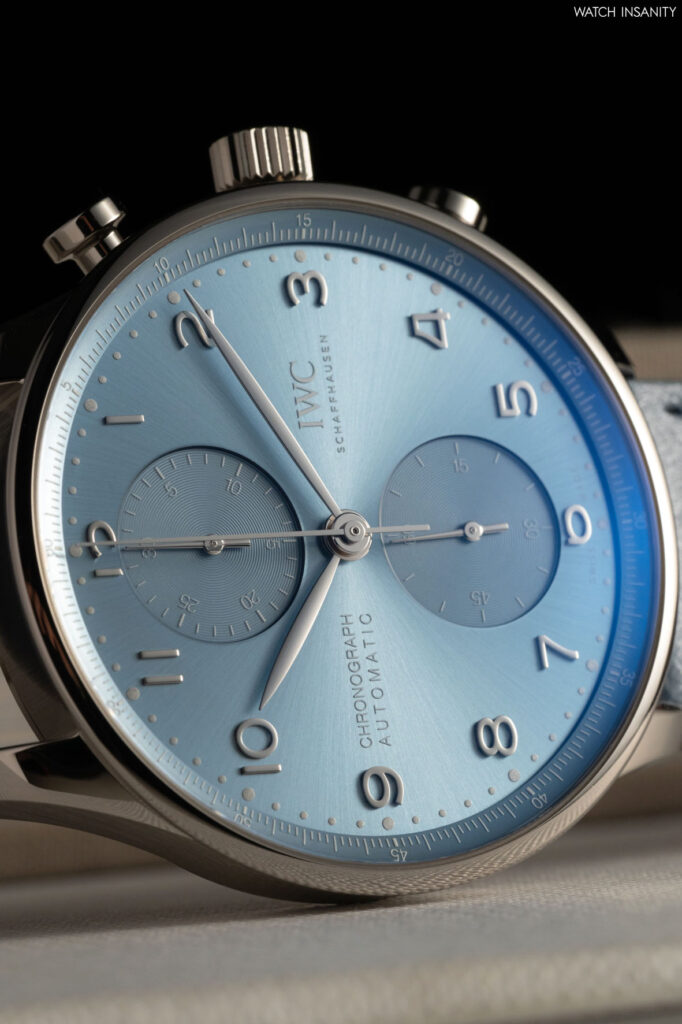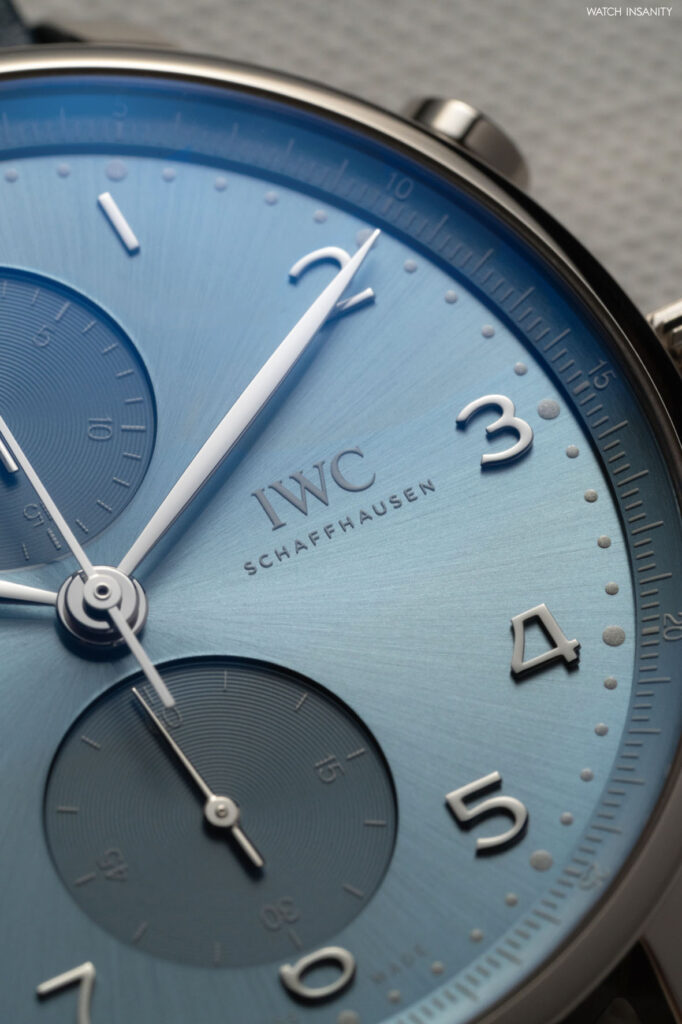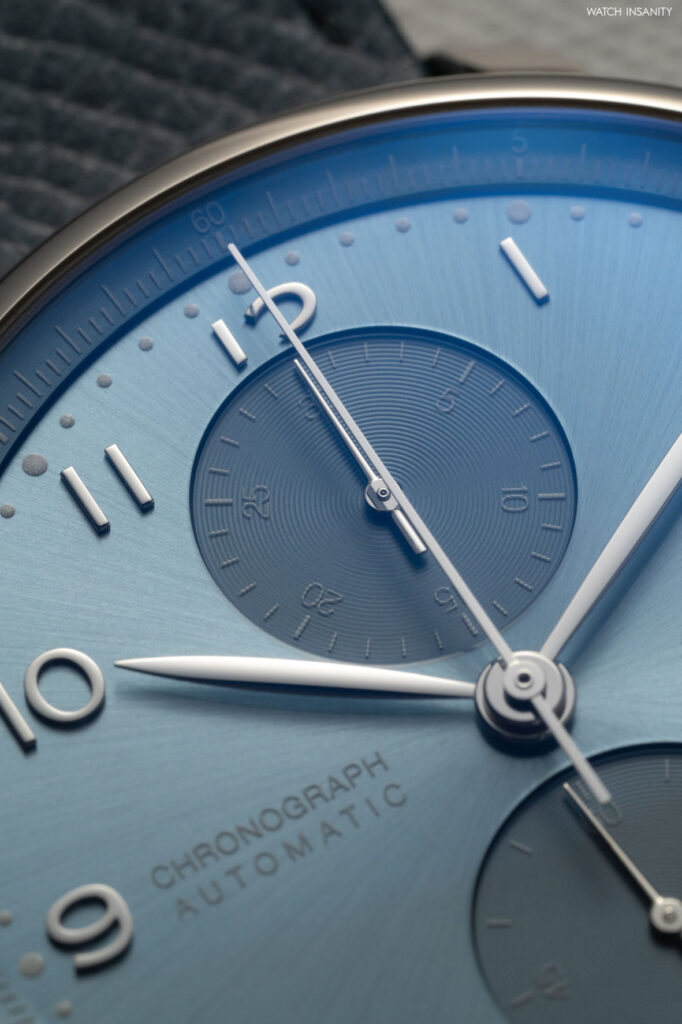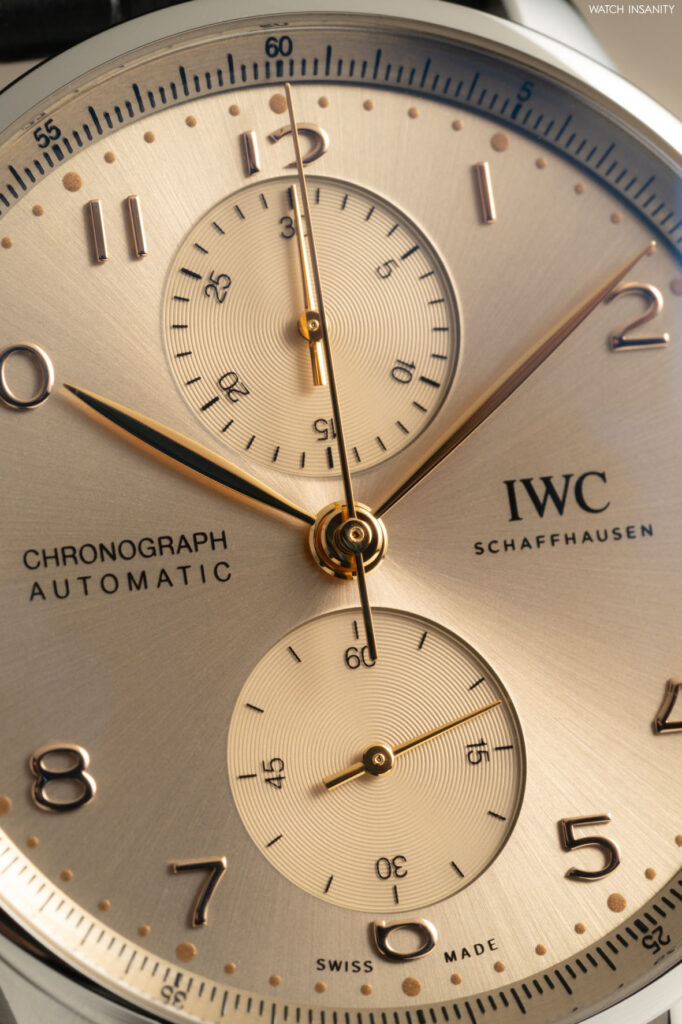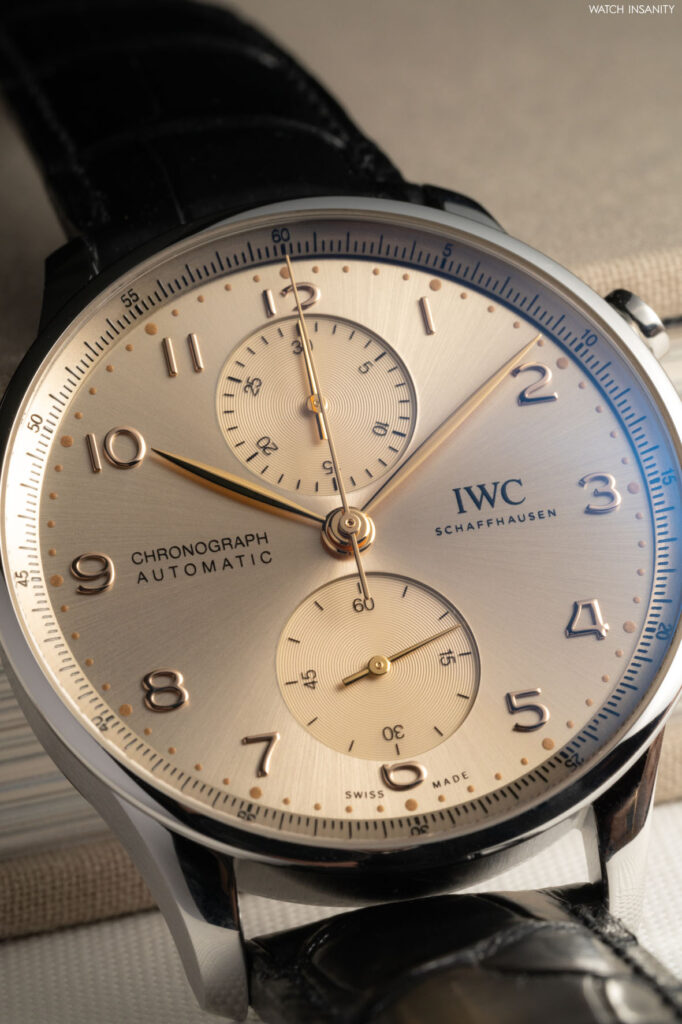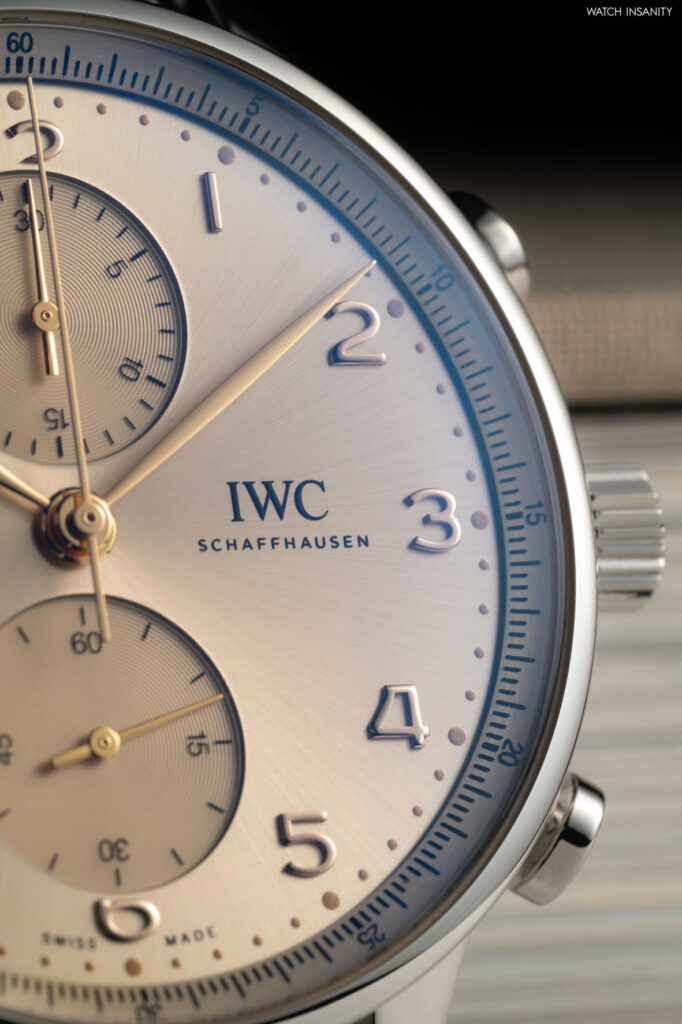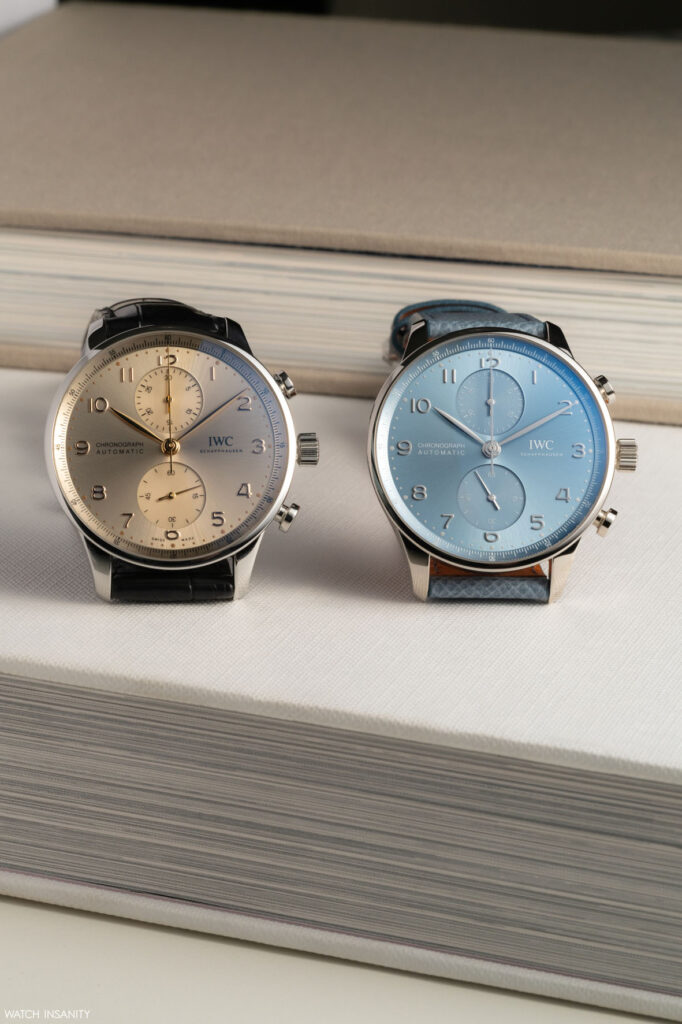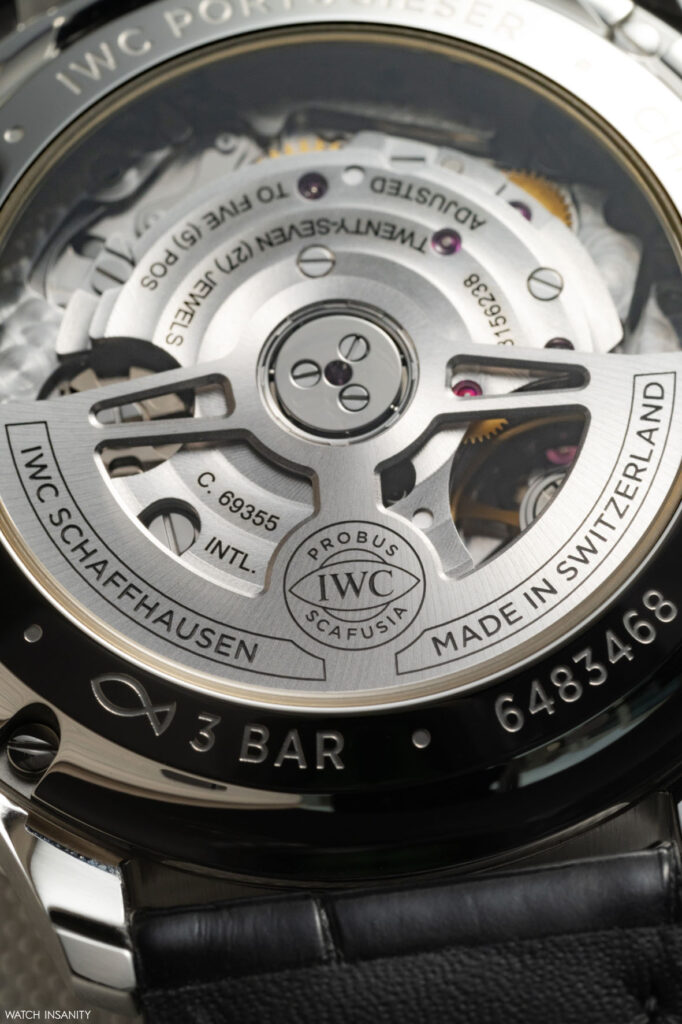IWC Portugieser Chronograph: the sky’s full array of colours
9 April 2024The history of watchmaking is full of famous watches, but the ones deserving the sector’s title of ‘icon’ are actually only a handful. There is a place of honour among them for the Portugieser by IWC – a timepiece model that’s been around for decades while maintaining a distinct aesthetic identity and remaining true to its tradition. In both its time-only and chronograph versions, it is still one of the most popular watches among enthusiasts, so much so that the brand has decided to refresh the collection on the occasion of Watches & Wonders 2024 by presenting some interesting chrono references. But first, let us take a step back and briefly retrace the Portugieser’s history.
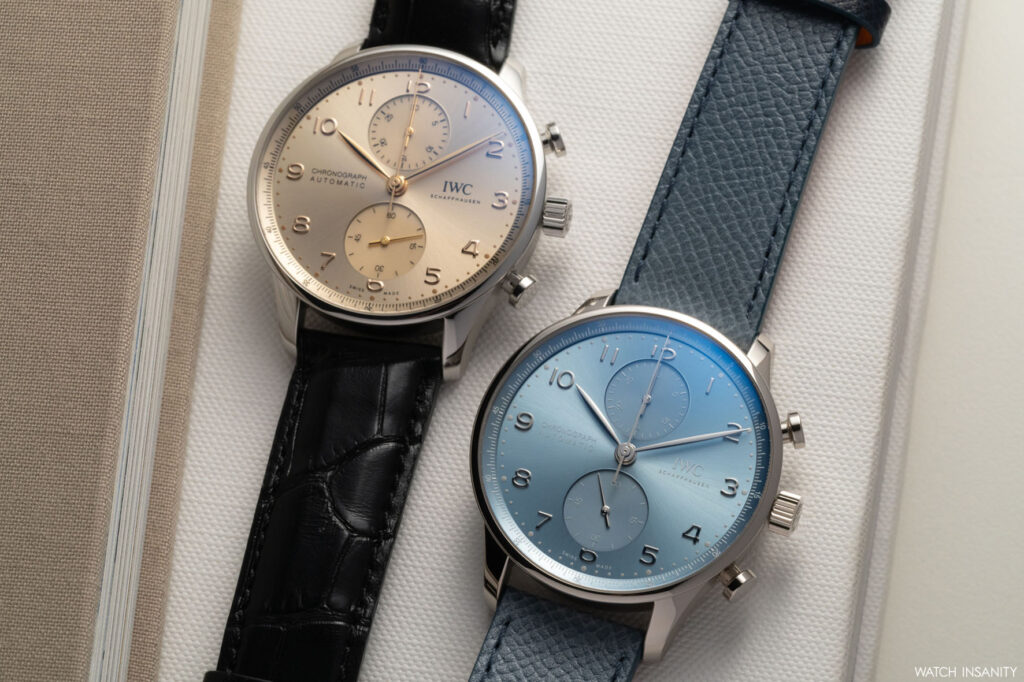
BRIEF HISTORY OF THE PORTUGIESER
Behind the name Portugieser lies a long and rich history, stretching from Switzerland to Portugal to Ukraine. It is the story of a watch that was born in 1939 and emerged one day from oblivion towards the end of last century to become a success, and not just for IWC. It was in fact in the late 1930s that the company began working on the watch that would later inspire the modern Portugieser collection. At the time, two Portuguese businessmen, Rodrigues and Antonio Teixeira, needed a particular type of watch which, in reality, did not yet exist.
They approached IWC, renowned for the accuracy of its parts, with a specific request: a modern wristwatch in a steel case that offered the precision and accuracy of a marine chronograph. IWC took up the challenge and developed an unusual watch, which was referred to only by its reference number: 325. The reason it stood out was its size, a case measuring 41.5 mm: a very common size today but which, in the 1930s, was very large indeed. Especially when you consider that the average size for men’s watches was between 34 and 36 mm. The reason for this size? In the case beat the movement of a large and precise pocket watch, the one the Portuguese gentlemen had asked for.
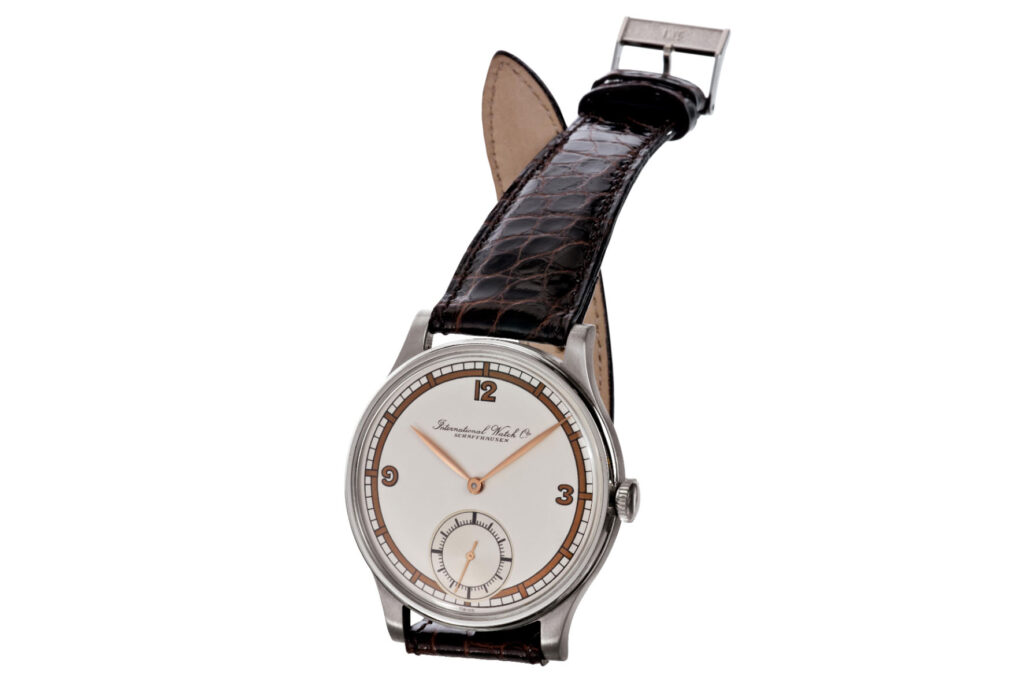
The first watches with the reference 325 were sold in 1939. Not in Portugal, however, but at the other end of Europe, in Ukraine, to the Odessa-based dealer L. Schwarcz. Only three years later, in 1942, did the first watches arrive in the country that gave them their name. The cause of the delay is to be found in the Second World War; even though Switzerland was neutral, trade and exports were difficult and unpredictable. So unpredictable that the Portugiesers ended up in Ukraine before Portugal.
REBIRTH IN THE LATE 1990s
According to IWC records, a total of 690 Portugiesers were produced from 1939 to 1981, with good success in Germany. The watch’s fate, however, changed in 1993. The manufacture, having emerged from the quartz crisis with great difficulty, was preparing for its 125th anniversary and was planning several celebratory special editions. One day, a member of the board of directors visited the manufacture in Schaffhausen with a vintage reference 325 on his wrist, which was noticed. Shortly afterwards, the manufacture made the decision: the Portugieser would be reborn in 1993 under the name Portuguese.
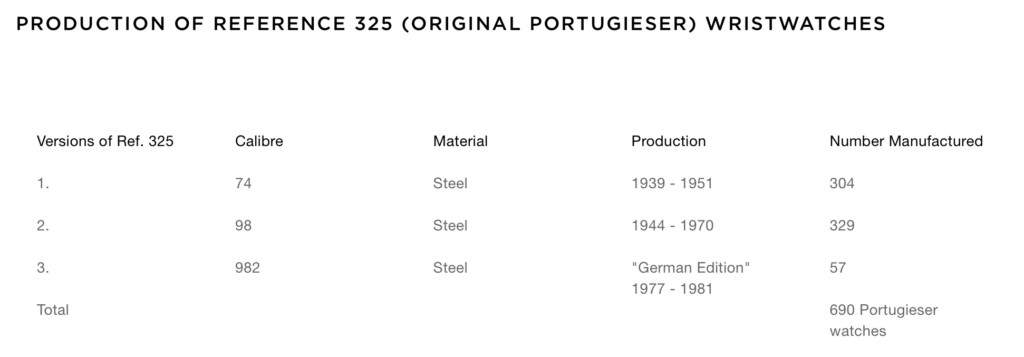
To mark the anniversary, IWC launched 1,000 models in steel, 500 in pink gold and 250 in platinum. The combination of tradition, timeless style and case dimensions in line with the modern trends made it a success. Many other special versions followed, and in 1998 came the famous Portuguese Chronograph, with counters at six and twelve o’clock. The watch took on the name Portugieser again in 2015.
THE COMING OF THE IWC PORTUGIESER CHRONOGRAPH
From its earliest days, the Portugieser was defined by its shape. The large movement ensured that the watch had a large case and a small second dial, which remained as constant as other features: the external chapter ring, Arabic numerals and leaf hands. From 1939 to the present day, these are the hallmarks of the Portugieser style, still evident in current models such as the Portugieser Automatic Chronograph.
Since 1998, the Portugieser Chronograph has brought a touch of sporty elegance to the collection. The now-recognisable vertical arrangement of the counters places the minutes directly at 12 o’clock, making them easy to read, while the small seconds are positioned at 6 o’clock. Another distinctive design feature is the printed inner rehaut with a quarter-second scale, which allows for extremely accurate time setting.
For a number of years, IWC’s 41 mm case housed automatic movements from external providers, such as the 76240 calibre and its successor, the 79350, based on the Valjoux 7750. Precise and reliable movements, but in the long run the brand decided to replace them with calibres developed and built in house. An important collection such as the Portugieser deserved and deserves calibres that are up to the task, such as the 69355, which is the latest references’ standard.
WATCHES & WONDERS 2024: THE NEW IWC PORTUGIESER CHRONOGRAPHS
Speaking of new models, IWC Schaffhausen brings to Watches & Wonders 2024 a Portugieser Chronograph collection that has been given a new colour scheme with three very contemporary colour codes: Horizon Blue, Obsidian and Dune. The cases’ diameter is the classic 41 mm and their thickness is rather moderate: 13.1 mm. If, from a technical point of view, this is essentially an extension of the line, the brand has dedicated the highest and most particular attention to the realisation of the dials to achieve this unprecedented colour palette.
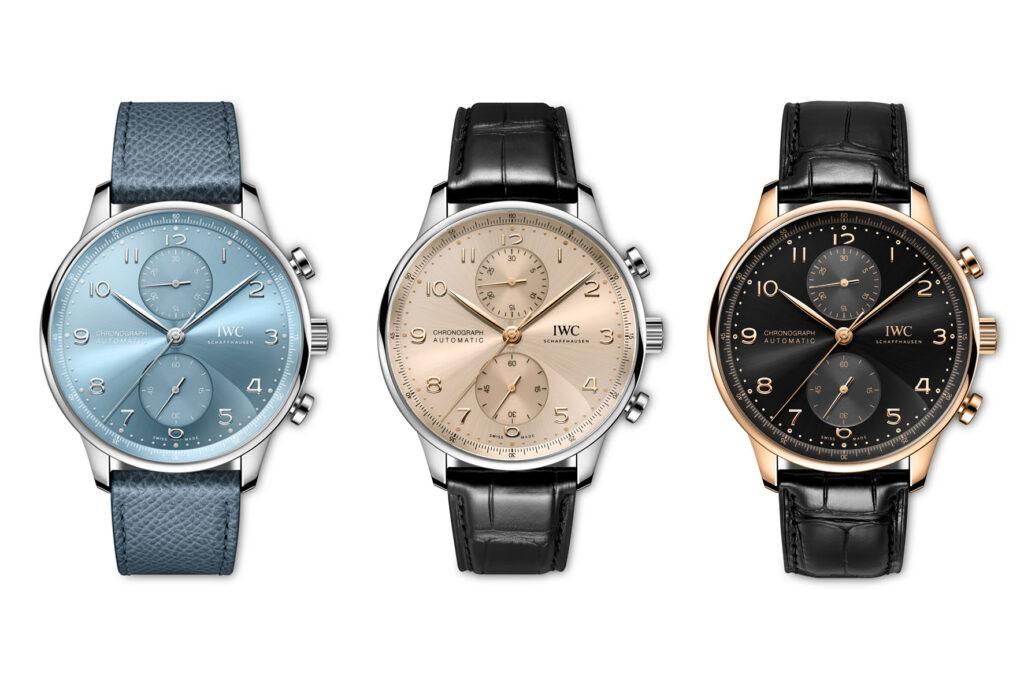
The machining of the dials is in fact technically complex. For all three colours, the brass base is first subjected to a soleil finish, on which the colour is then applied. The next two steps are the most delicate, as the dials are then coated with transparent lacquer, applied in up to 15 layers, which are then finely polished to a mirror finish to achieve the desired shade.
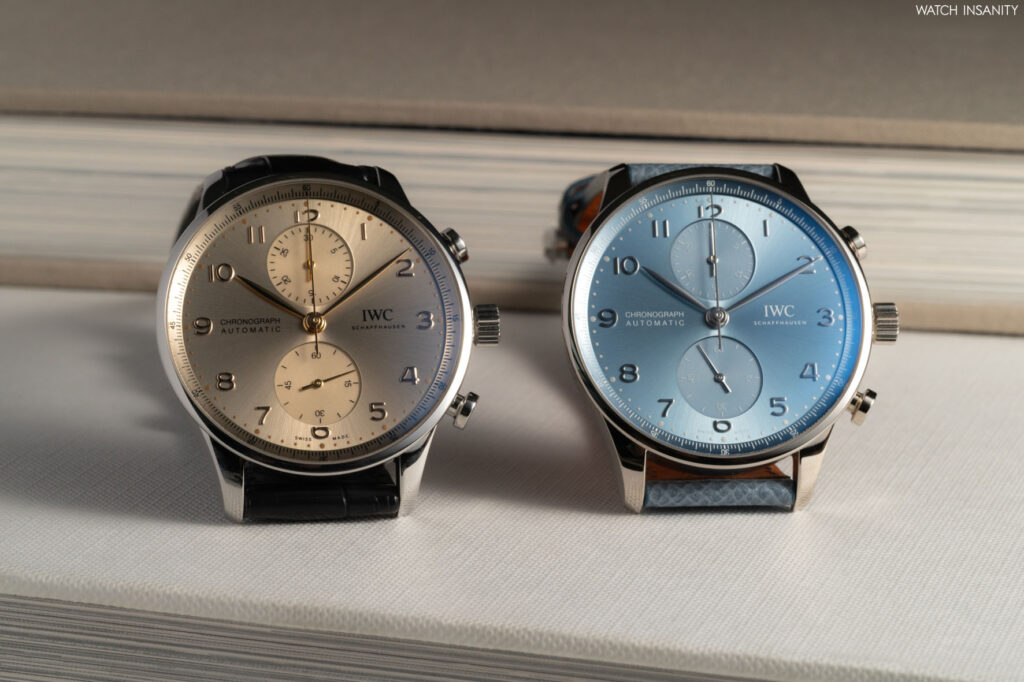
For a contrasting finish, IWC’s craftsmen mill the counters on both the brass base and the lacquer layer. The subsequent printing, carried out using a special process, adds a three-dimensional effect to the dial of the new Portugieser Chronograph. This effect is further amplified by the indices applied one by one by hand. It is easy to understand that the entire manufacturing process for these dials, which consists of more than 60 steps, is very difficult for the IWC craftsmen to master.
THE DIALS’ COLOURS
So what do these new colours of the Portugieser Chronograph look like? To define them, IWC relies on a story inspired by nature and the sky – one that haute horlogerie brands like so much. Ref. IW371626 has a Horizon Blue dial, a shade of blue that, according to the brand, is intended to recall the early afternoon sky, bathed in the day’s brightest light. In any case, it is a very delicate shade of blue, which makes the watch unisex. This model is completed by an 18-carat white gold case with a polished and satin finish, rhodium-plated hands and hour markers, and a blue calfskin strap made by Santoni.
Ref. IW371625 has a dial in the colour called Obsidian, a deep black that contrasts with the polished and brushed 18-carat gold case. Also in gold are the hour markers and the plating on the hands. Thanks to the lacquered finish and the complexity of its workmanship, the dial exudes an incredible depth, almost hypnotic to the beholder’s eye. According to IWC’s story, this combination of black and gold is meant to symbolise the night sky with its shining stars. The chronograph is completed by a black alligator leather strap, also by Santoni.
The latest reference of the new Portugieser Chronograph is the IW371624 with a Dune dial, a colour somewhere between sand and champagne. It is paired with a steel case and also has gold hands and gold-applied hour markers, as well as a black alligator leather strap. If with the two previous dials we were in the early afternoon and deepest night, the Dune colour takes us just before the sun sets completely, to the gates of night.
THE IWC 69355 CALIBRE
All three versions are powered by the same automatic movement, that IWC-manufactured 69355 calibre we mentioned above. The 69355 calibre is part of the IWC 69000 family of self-winding chronograph movements. This version, introduced with the Portugieser 150 Years in 2018, works at 28,800 vibrations per hour and has 46 hours of power reserve. It features IWC’s classic perforated oscillating weight which, on these references, is visible through the sapphire crystal case back.
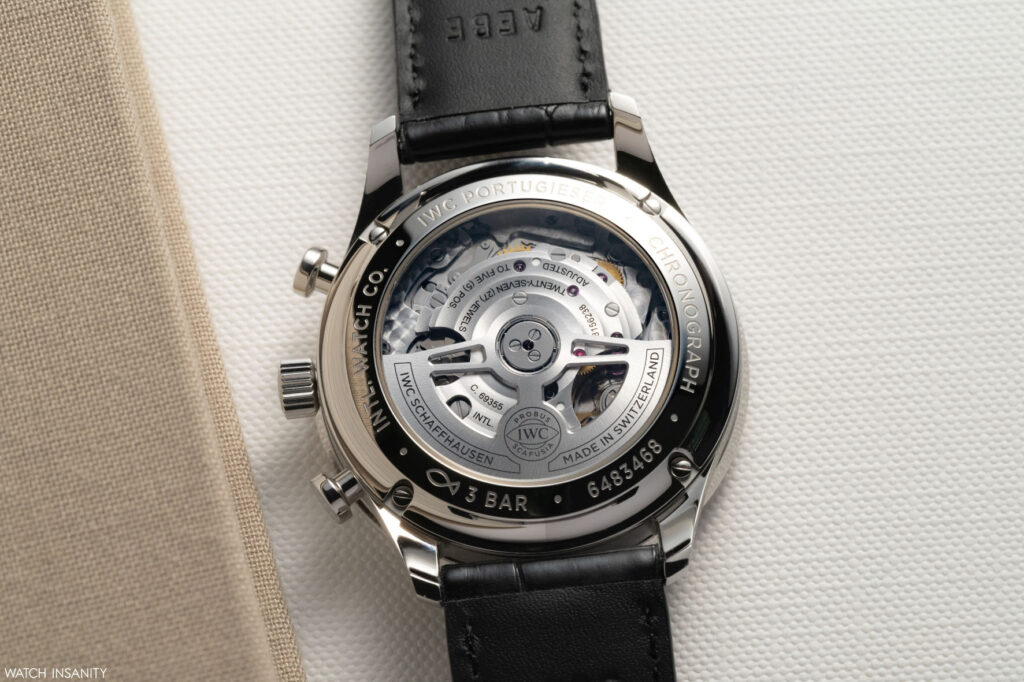
It is a mechanical chronograph movement designed with an emphasis on robustness, reliability and durability. The chronograph function is controlled by the column wheel, which ensures optimal management of the individual time measurement phases. In addition, the push-buttons have a pleasant resistance to pressure. With the IWC-manufactured 69355 calibre, IWC has optimally merged the basic movement and the chronograph functions so that time intervals measurement remains precise even when the chronograph is subjected to intensive use.
Finally, a glance at the prices: 8,950 euros for the Dune dial reference, 20,000 euros for the Obsidian dial reference and 21,100 euros for the Horizon Blue place the new Portugieser Chronograph references in line with what is offered in the IWC collection. With the added bonus of contemporary colours that, as they hope in Schaffhausen, will appeal to a wider audience.
By Davide Passoni

